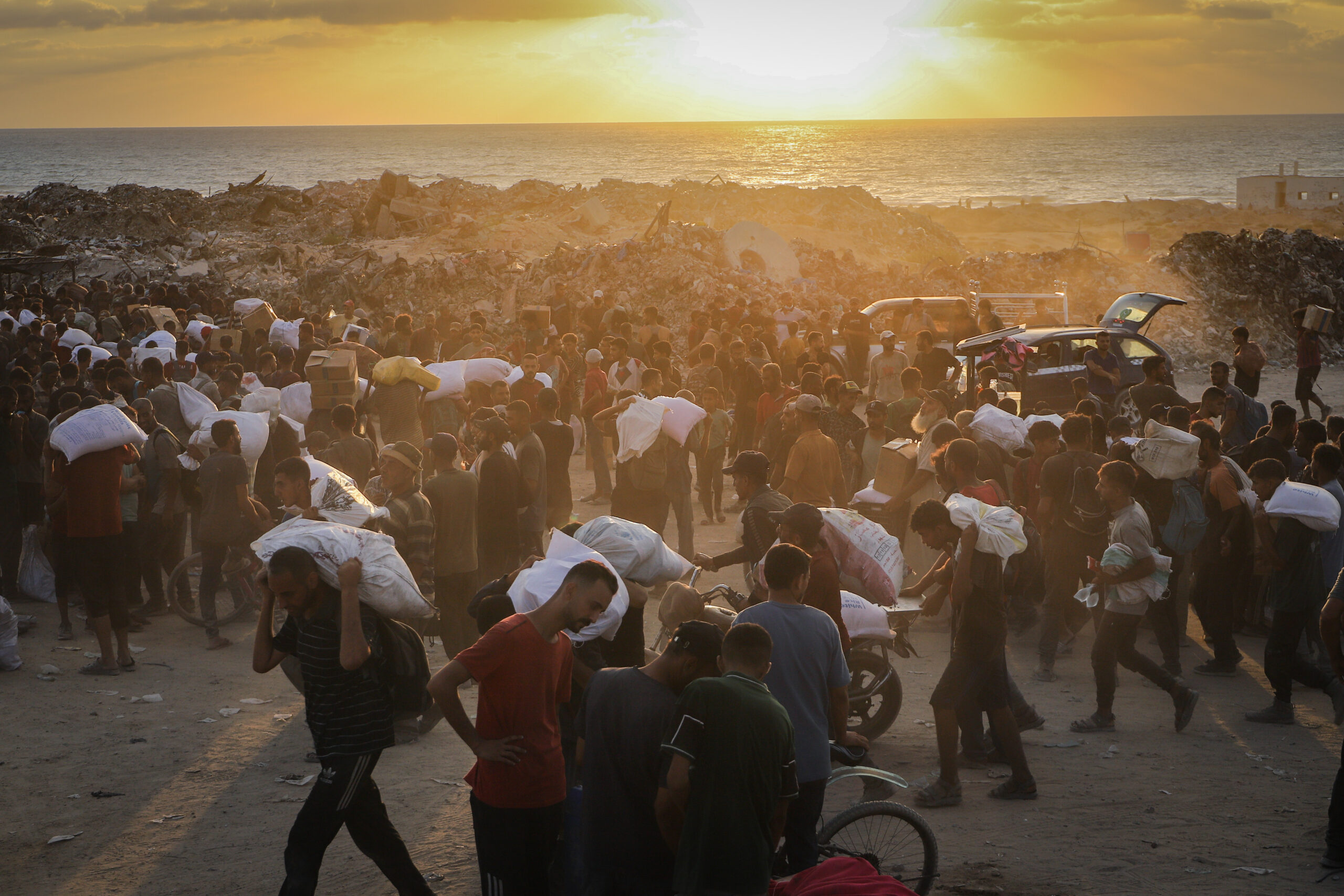Hamas spent two years insisting that Gaza was facing an Israeli-engineered famine. International agencies repeated the claim, reporters amplified it, and activists used it as a weapon. Now, with the release of new UNICEF data, the narrative has flipped. Instead of starvation, the numbers show an entrenched obesity crisis—one that existed long before the war and continued throughout it. The same Hamas channels that once warned of mass hunger are suddenly protesting that Israel is making them “gain weight,” pointing to shelves “overflowing with chocolate, soft drinks, and cigarettes.” Their own spokesmen now complain about eating gevina mevushélet (processed cheese) and “manufactured meat.” The pivot is so sharp it exposes what Israel, medical researchers, and Gaza’s own health officials were documenting for years: there was never a famine.
UNICEF’s latest report compares childhood obesity rates in Israel and in areas controlled by the Palestinian Authority and Hamas. If Gaza had truly been starved, the data would show it. Instead, the numbers point to a society already burdened by high-calorie diets, sugar dependence, and lifestyle diseases. Twenty-eight percent of children aged 5–9 in “Palestine” are obese. In Israel, the number is 23%. Among 10–14 year olds, the rate climbs to 33% in “Palestine,” compared to 28% in Israel. Teenagers show the same pattern: 32% obesity under Hamas and the PA, 19% in Israel. Gaza’s adults are even heavier. Nearly 40% qualify as obese, and diabetes—long documented in Gaza—claims more than 11% of deaths. These are not famine statistics. They track with years of research showing obesity was already a defining public-health issue in Gaza, made worse by cheap imported sweets, excessive sugar consumption, and a welfare structure that rewards dependence instead of productivity.
A new UN-backed dataset shows Palestinian children are more obese than Israeli kids in every age group, and adult obesity in Gaza/PA soars far beyond Israel’s. It sharply contradicts the nonstop “famine” narrative pushed against Israel and raises hard questions. pic.twitter.com/qTuvo6Z3Eh
— Eretz Israel (@EretzIsrael) November 17, 2025
Hamas now complains about “unhealthy imports” on store shelves. But these items entered Gaza through Hamas-approved channels because they were profitable. Gaza traders prioritized chocolate, soda, instant desserts, processed cheese, and other high-margin goods. UN agencies, particularly UNRWA, purchased and distributed the same products on an enormous scale. As trucks reentered Gaza under the ceasefire, residents were greeted not with evidence of starvation, but with restocked aisles filled with sweets and sugary drinks. Local spokesmen now insist that the “overabundance” of candy is part of an Israeli conspiracy to hide the famine that UNICEF just disproved.
This shift reveals the mechanics of the narrative. When international pressure was needed, Gaza was starving. When obesity statistics emerged, Israel was supposedly forcing Gazans to overeat. Both claims come from the same source, and both collapse under basic scrutiny. The numbers are unambiguous. “Palestine” ranks among the heaviest populations in the Middle East, far above Israel. It sits near Egypt, Jordan, and Syria—countries whose population is ethnically indistinguishable from the Arab Muslims who later adopted the political identity of “Palestinians.” A society near the top of global obesity rankings is not starving. It is misgoverned.
The Hamas complaints now circulating online inadvertently confirm the truth. Gaza’s crisis was never about food scarcity. It was about what Hamas chose to import, what UN agencies chose to fund, and how billions in foreign aid were used to subsidize a dysfunctional economy under terrorist rule. Israel did not cause the obesity crisis in Gaza. Hamas did.
This article is simply false. The real facts are:
— COGAT (@cogatonline) November 17, 2025
1. Hundreds of trucks enter Gaza daily from Egypt, Ashdod Port, and Israel, carrying food, shelter and medical supplies. Aid is not being arbitrarily denied.
2. The Allenby Bridge Crossing was closed by decision of the… https://t.co/VMytOQF9Jq
The famine story fell apart because facts finally confronted propaganda. UNICEF’s own report undermined years of accusations. What emerges is the portrait of a population drowning in sugar, not suffering from a lack of calories. The world demanded outrage over a famine that never existed. What it received instead was statistical proof that Gaza’s leadership weaponized suffering while its people faced a very different public-health crisis—one created by corruption, mismanagement, and a system built to preserve victimhood rather than build a future.
The famine was fiction. The obesity is real. The record now speaks plainly, and no amount of new rhetoric from Hamas can bury the numbers.




